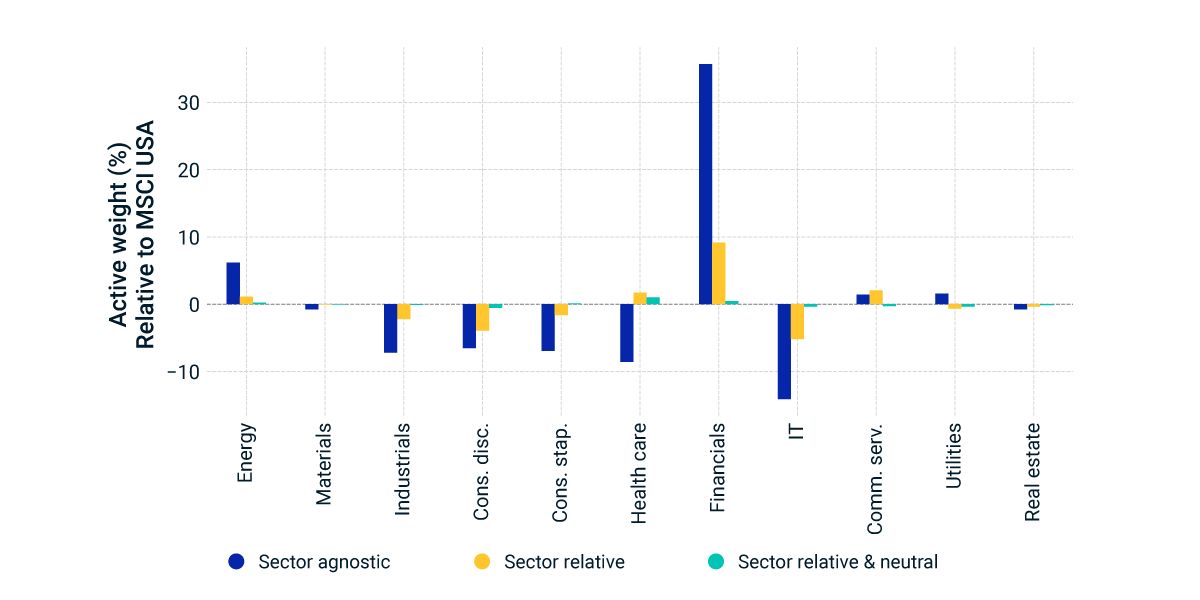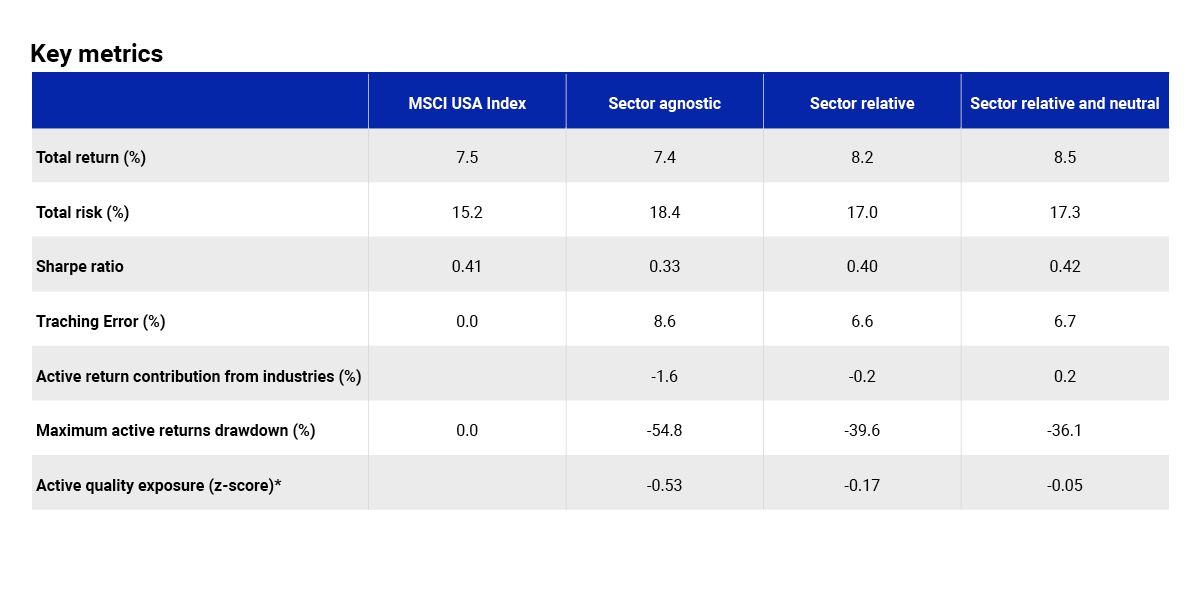The Value of a Sector-Based Perspective
After years in the shadows, value stocks have emerged into the light this year, amid higher inflation and rising interest rates. Throughout this volatile year, some sectors have also experienced a change of fortune, led by energy's 56% return through the end of May (as measured by energy stocks in the MSCI USA Index).
The long-term impact of sectors on value
For illustrative purposes, we constructed three distinct hypothetical versions of a value strategy. The first ("sector-agnostic") holds "cheap" firms regardless of sector. The second ("sector-relative") holds firms that are cheap when compared to their own sector. And the third ("sector-relative and -neutral") holds firms that are cheap relative to their sector, while preserving the sector weights of the broad market.1
The sector-agnostic approach resulted in a large overweight to financials and energy. This year's surge in oil prices drove high short-term performance, but over the longer term this approach underperformed in part due to its sector (and industry) makeup. Concentration within sectors resulted in higher tracking error, more severe drawdowns and a higher share of lower-quality "value traps."
The sector-relative approach mitigated many of these effects, but still resulted in sizable sector tilts. In contrast, we found that applying sector neutrality and relativity (as was done in the sector-relative and -neutral approach), derived the value premium without taking on the outsized risks present in the other approaches.
Leaving sectors unconstrained caused large deviations

Sector weights averaged monthly over the period December 2000 to May 2022.
Hypothetical value strategies compared to the MSCI USA Index

Monthly average. Gross returns annualized in USD. Dec 29, 2000, to May 31, 2022.
Subscribe todayto have insights delivered to your inbox.
Purifying Value
In this blog post, we focus on the impact of that unintended exposure. Using the MSCI World Index as the starting universe, we simulated a value portfolio that aims for investability, diversification and maximum exposure to the value factors, book-to-price ratio and earnings yield.
Did Value-Factor Exposure Deliver for Value Funds?
Global and global-ex-U.S. value funds underperformed their respective MSCI regional indexes from October 2012 through April 2020, on an average basis.
The Theory of (Value) Relativity
To assess whether a stock is cheap or expensive, its valuation needs to be put into context. This is often done by comparing it to its peers.
1 Selecting companies based on their sector-relative value scores can lead to active weights in sectors. The sector-neutral approach implements an additional layer of equating sector weights of the strategy to that of the parent.
The content of this page is for informational purposes only and is intended for institutional professionals with the analytical resources and tools necessary to interpret any performance information. Nothing herein is intended to recommend any product, tool or service. For all references to laws, rules or regulations, please note that the information is provided “as is” and does not constitute legal advice or any binding interpretation. Any approach to comply with regulatory or policy initiatives should be discussed with your own legal counsel and/or the relevant competent authority, as needed.
